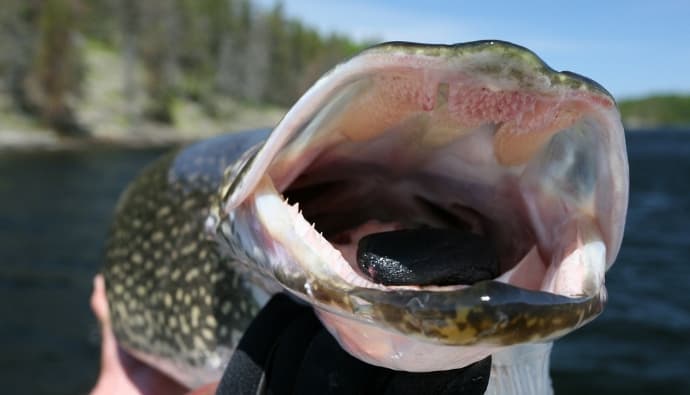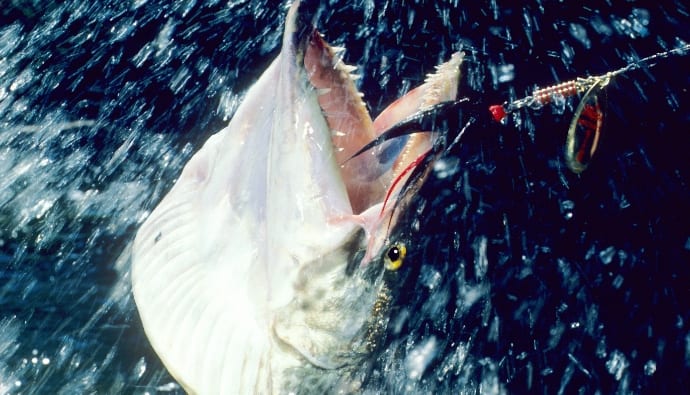What looks like a pig from the front and swims in the ocean?
The pig fish (more commonly spelled pigfish), that’s what!
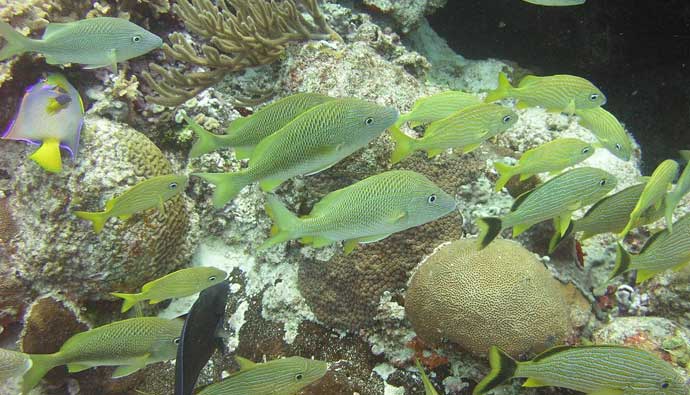
This not so much pig-headed fish is caught in large numbers by anglers as bait to catch larger fish. It also makes for a delicious panfish, so we’ve included a recipe on how you can cook it up if that’s your jam.
Time to grab your light tackle gear or cane pole and catch this awesome little fish!
Overview
The pigfish has long anal fins that look like its dorsal fin in size and shape. The distinctive head is pointed and sloped, while the snout looks like a pig’s. The thin lips give this fish a creepy look, and its body is bluish-gray with brassy spots. The fins are yellow/bronze in color and have dusky margins.
This fish can be found in the western Atlantic Ocean ranging from Massachusetts and Bermuda right up to the Gulf of Mexico. Yet, if you want to find a lot of them in one place, head to the Chesapeake Bay rather than tropical waters. This pig-faced fish (just kidding) is nocturnal and can be found in coastal waters over mud and sandy bottoms.
It is not an endangered species.
Pigfish Facts
| Scientific Name | Orthopristis chrysoptera |
| Common Name | Pigfish |
| Family | Haemulidae |
| Characteristics | Pointed and sloped head with a face like a pig’s. Lips are thin, and fins are yellowish. |
| Depth Range | 100-200m |
| Habitat | It can be found in the western Atlantic Ocean ranging from Massachusetts and Bermuda right up to the Gulf of Mexico. |
| Limits | Check your local regulations |
Looking for Pigfish: Where Can You Find Them?
Adult pigfish spawn in the Gulf, and the young ones grow up in bays, shoals, or grassy areas. That’s where they find their main source of food, i.e., small mollusks and crustaceans. Adults can be found in slopes of channels or grassy areas throughout the Gulf as well as around docks and piers.
How to Catch Pigfish
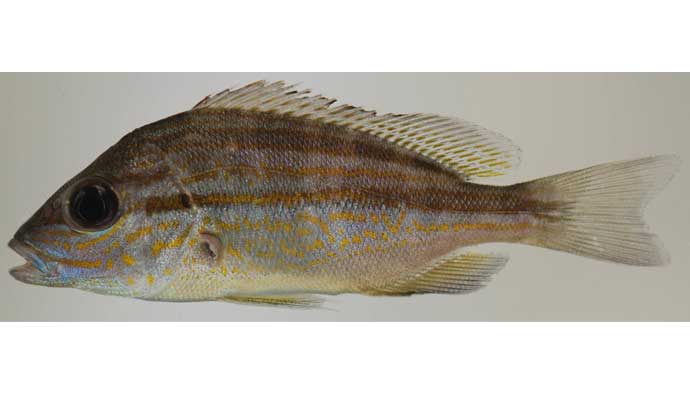
This pig-headed fish stays true to its name – it is difficult to catch, but it is well worth the trouble, especially if you want to use it as bait. Use a pinfish trap to catch them. Find a nice, shallow, and flat surface that is not under more than 4 feet of water, is grassy and has sandy depressions. Drop a trap or two in there and wait for the fish to swim right in.
Place frozen chum in the trap as pigfish bait. When it thaws, the pigfish will be attracted to it. Use either a Sabiki rig or a gold hook that has a split shot and a piece of shrimp as bait. If you catch the fish in more than a couple of attempts, that means there are more in the vicinity. If that is the case, throw a cast net in the chum to catch multiple fish at once.
Pig fish Fishing Tactics
- If you are using a pinfish trap to catch pigfish, throw the cast net into and on the chum line to catch many fish at the same time.
- If you are using live pigfish as bait to catch larger fish such as snook or tuna, make it thrash about in the water. Do this by placing it a couple of feet above the grass at the bottom. It will start grunting (yes, the infamous pigfish grunt) and struggling to move into the grass, which will attract other predatory fish.
Red Pigfish Fishing Tips
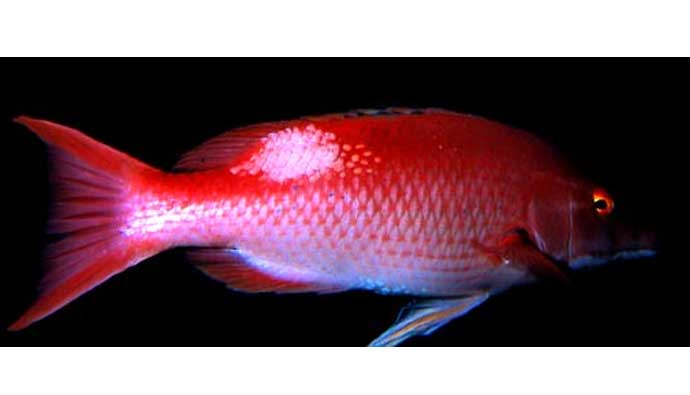
- If you are catching pigfish to use as bait, keep the fish alive by changing the seawater they are placed in. During the summertime, the oxygen content in the water can dwindle fast.
- Pigfish love to eat baby snook, which can be used as effective bait.
Pigfish Seasons
There is a reason why this pig-faced fish is considered to be summer bait. The fish spawns in spring around the end of May during which time it grows to about 2 inches. Yet, it gains another inch by midsummer, which is ideal for large and medium size trout.
When they grow bigger by the end of summer, they are large enough to be used as bait for larger fish. Besides sea trout, bull redfish and snook will feed on pigfish as it gets even larger in September and October, after which it moves out to sea.

How to Clean Pigfish
- Scale the fish with a scaler or a fillet knife, rinse it, and place it on a cutting surface.
- Use a sharp fillet knife to slice off the tail and slice off the dorsal fins from back to front.
- Remove the anal fin and cut around the vent.
- Use the fillet knife to slice from the anal vent to the head and open the body cavity.
- Remove the pectoral fins and the head.
- Remove the guts and stomach lining, rinse the fish, and freeze immediately.
How to Cook Pigfish
- Sprinkle hot pepper sauce on the fish and leave it for an hour in the fridge to marinate.
- Heat ¾ inch of peanut oil in a skillet.
- Sprinkle salt on the marinated fish and inside the body cavity.
- Place the fillets in a plastic bag with some cornmeal and shake till it is coated well.
- Fry the cornmeal-coated pigfish in the hot oil for 3 to 5 minutes on each side.
- Serve hot with French fries.
FAQs
It’s called a pigfish because of the grunting noises it makes when it is caught and struggling in the water and because of its pig-like snout.
As bottom feeders, pigfish forage for crustaceans, small fish, and worms along the sandy sea bed.
The largest length and weight of this fish are 18 inches and 2 pounds. Yet most don’t grow more than 7 to 9 inches in size and weigh no more than half a pound.
Insider Advice
It’s the fish that looks like a pig and acts like one too. While the pigfish is not a popular table fish, you can increase your chances of catching bigger fish, such as tuna, if you use it as bait. Rather than purchasing it, use the tips mentioned in this guide to capture it yourself and use it as fresh, live bait.
Do you have any tips and tactics for catching this fish? Share in the comments below and do share this guide if you liked it.




 Facebook
Facebook YouTube
YouTube



